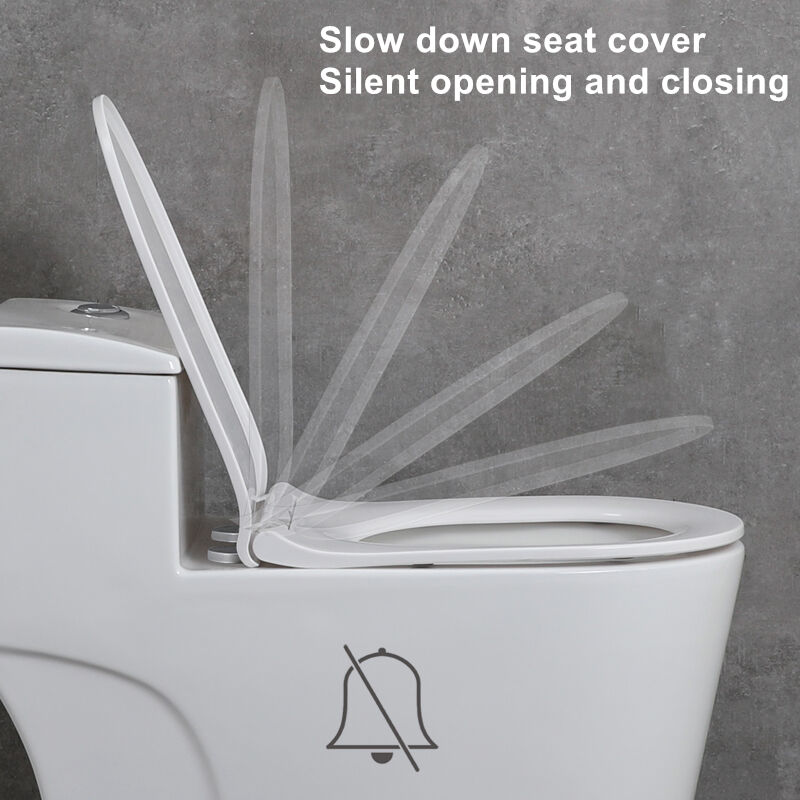What Are the Advantages of a One Piece Toilet Design?
A one piece toilet is a single unit where the tank and bowl are fused together, unlike two piece toilets that have separate tanks and bowls. This design has grown in popularity for bathrooms of all sizes, thanks to its practical benefits and modern look. Let’s explore the key advantages of choosing a one piece toilet for your home.
1. Easier to Clean
One of the biggest perks of a one piece toilet is how simple it is to keep clean.
- No gaps or crevices: In two piece toilets, there’s a small space between the tank and bowl where dirt, dust, and grime can build up. This gap is hard to reach with a cloth or brush. A one piece toilet, with its smooth, continuous surface, has no such gaps. You can wipe the entire unit—from the top of the tank to the base—with a single swipe, saving time and effort.
- Fewer hidden spots: The base of a one piece toilet sits close to the floor, leaving little room for dirt to collect underneath. This makes it easier to clean around the toilet with a mop or cloth, keeping the bathroom hygienic with less work.
For busy families or anyone who hates deep cleaning, a one piece toilet cuts down on scrubbing time.
2. Sleek and Modern Appearance
One piece toilets add a polished, contemporary look to any bathroom.
- Smooth lines: Without the separate tank and bowl, the one piece toilet has a streamlined, unbroken design. This works well with modern, minimalist, or small bathrooms, where cluttered looks are unwanted. It can make the space feel larger and more put-together.
- Variety of styles: While they’re known for modern designs, one piece toilets come in many shapes—from round bowls to elongated ones—and finishes (white, gray, even matte black). This means they can fit traditional or industrial-style bathrooms too, as long as you want a clean, seamless look.
A one piece toilet isn’t just functional—it’s a design element that the bathroom’s overall feel.
3. More Durable and Leak-Proof
The one piece design is sturdier and less likely to leak than two piece models.
- Stronger construction: Since the tank and bowl are made as one piece, there’s no risk of the tank loosening or shifting over time. In two piece toilets, the bolts connecting the tank and bowl can wear out, leading to wobbling or leaks. A one piece toilet avoids this problem entirely.
- Fewer leak points: Two piece toilets have a rubber gasket between the tank and bowl to prevent water from leaking when the tank flushes. Over time, this gasket can degrade, causing drips. One piece toilets have no such gasket, so there’s one less part that can fail.
This durability means a one piece toilet often lasts longer, saving you from repairs or replacements.
4. Space-Saving Design
One piece toilets are ideal for small bathrooms or powder rooms where space is tight.
- Compact size: They’re generally shorter in height and depth than two piece toilets. For example, a one piece toilet might be 60–70 cm deep, while a two piece could be 70–80 cm. This extra space can make a big difference in a small bathroom, leaving more room to move around.
- Closer to the wall: The tank of a one piece toilet sits closer to the wall, reducing the gap between the toilet and the wall. This not only saves space but also makes cleaning behind the toilet easier—no more reaching into a narrow, hard-to-reach area.
In tiny bathrooms or en-suites, a one piece toilet helps maximize every inch.
5. Quieter Flushing
One piece toilets often flush more quietly than two piece models, which is a big plus for shared homes or bedrooms near the bathroom.
- Solid construction: The single-unit design absorbs more sound when the toilet flushes. In two piece toilets, water rushing from the tank to the bowl can create more noise, especially if the gasket is worn. One piece toilets muffle this sound, making early-morning or late-night flushes less disruptive.
For anyone who values peace and quiet, this is a standout advantage.
6. Lower Long-Term Costs
While one piece toilets may cost more upfront than two piece ones, they can save money over time.
- Fewer repairs: With no separate tank bolts or gaskets to replace, one piece toilets need fewer repairs. You won’t have to buy replacement gaskets or pay a plumber to fix leaks between the tank and bowl.
- Longer lifespan: Their durable design means they often last 10–15 years (or more) with proper care, compared to 8–12 years for some two piece models. This reduces the need to buy a new toilet as often.
The initial higher cost is balanced by lower maintenance and a longer life.
FAQ
Is a one piece toilet heavier than a two piece?
Yes, because it’s a single unit. Most weigh 50–80 pounds, while two piece toilets (tank + bowl) are 30–60 pounds total. This makes one piece toilets a bit harder to install, but they’re still manageable with help.
Can a one piece toilet fit in a small bathroom?
Absolutely. Their compact design (shorter depth and closer-to-wall tank) makes them perfect for small spaces like powder rooms or en-suites.
Do one piece toilets use more water than two piece ones?No. Both can be low-flow models (using 1.28 gallons per flush or less). Water usage depends on the toilet’s design, not whether it’s one or two piece.
Are one piece toilets harder to replace if they break?
Not necessarily. While they’re heavier to remove, their simple design means there are fewer parts to disconnect. Most plumbers are familiar with installing them, so replacements are straightforward.
Can I get a one piece toilet with an elongated bowl?
Yes. Elongated bowls (longer and more comfortable) are available in one piece designs, just like round bowls. They’re a great choice for master bathrooms where comfort matters.
